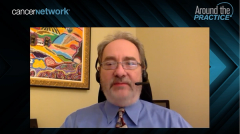
Treatment Approaches for Patients with Relapsed-Refractory MM
Expert panelists discuss treatment approaches for patient with multiple myeloma that have progressed and are relapsed and/or refractory (R/R).
Episodes in this series

Transcript:
Robert Z. Orlowski, MD: Despite all the improvements in therapy for induction in both transplant-eligible and transplant-ineligible patients, unfortunately we still have patients who develop relapsed and eventually both relapsed and refractory myeloma. Fortunately, a lot of new therapies are being developed in that area that will make a huge impact. Many of them are already available, and others are soon going to be. Let’s start with Ola. We talked about using daratumumab up front, which we all agree that a patient should get if they can. Would you use daratumumab until progression and then not be able to use it second line? Or would you stop at some point and then reuse it in the second-line setting?
C. Ola Landgren, MD: That’s a good question. In my practice, I use it frequently up front. We talked about the DRd [daratumumab, lenalidomide, dexamethasone], daratumumab–VRd [bortezomib, lenalidomide, dexamethasone], and daratumumab–KRd [carfilzomib, lenalidomide, dexamethasone]. I use that a lot. Sometimes I use daratumumab–CyBorD [cyclophosphamide, bortezomib, dexamethasone]. As I mentioned, I’ve started switching from lenalidomide maintenance single drug to daratumumab with lenalidomide as 1 of my defaults. I know there isn’t a final study proving how long to do it, but I’ve started doing it about 1 year. The protocols [say to do it] 2 years or continuously.
My rationale has been that I deepen a response beyond what I do with the combination up front. If patients relapse later on, [I use] lenalidomide maintenance. I can then go back to a daratumumab-containing regimen. There’s a window that has to be taken into account. If the patient relapses a few months after you stop the combination, that’s probably not a good drug to go back to, but we all probably have the same experience. If it’s 6 or 12 or more than 12 months, you can safely go back and use it in other combinations. That’s what I frequently do.
Transcript edited for clarity.
Newsletter
Stay up to date on recent advances in the multidisciplinary approach to cancer.























































































